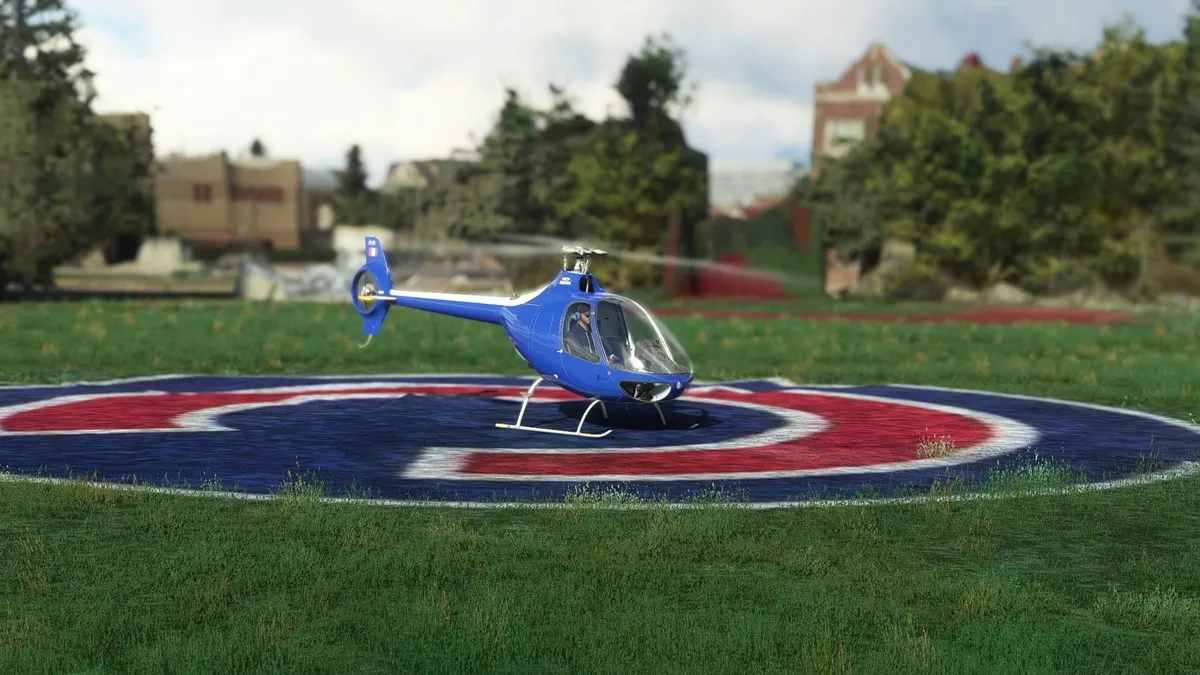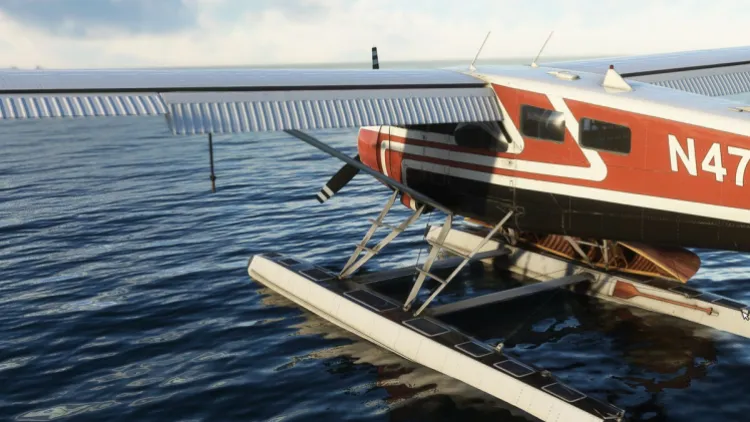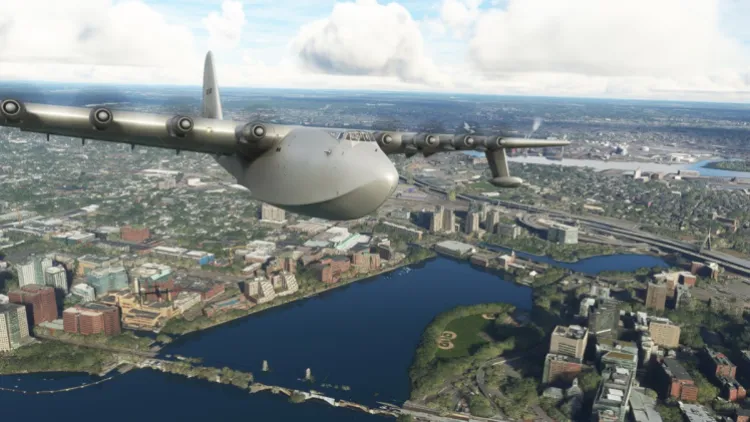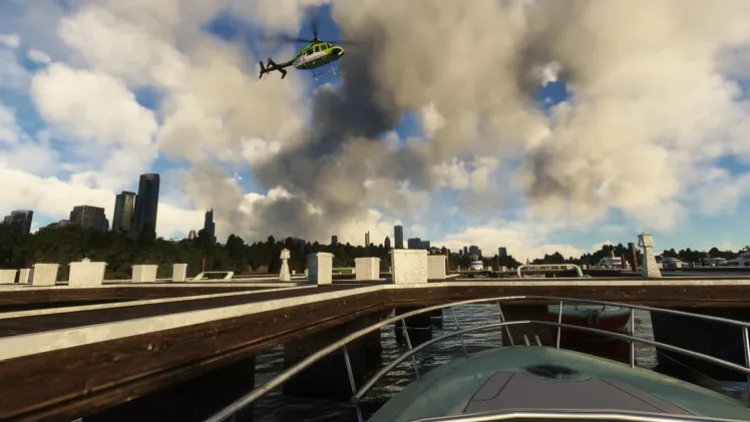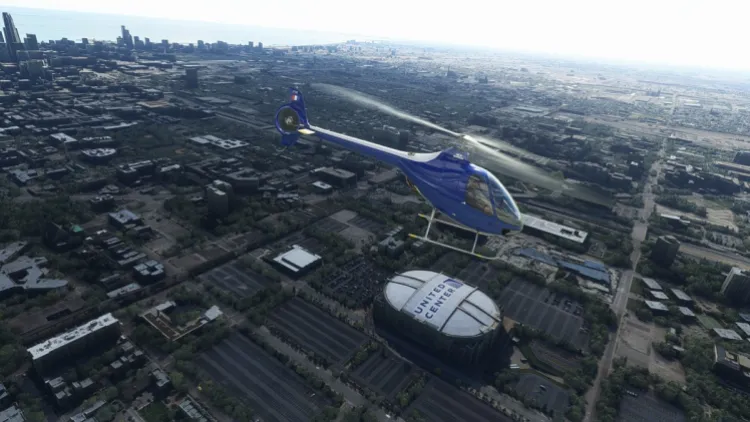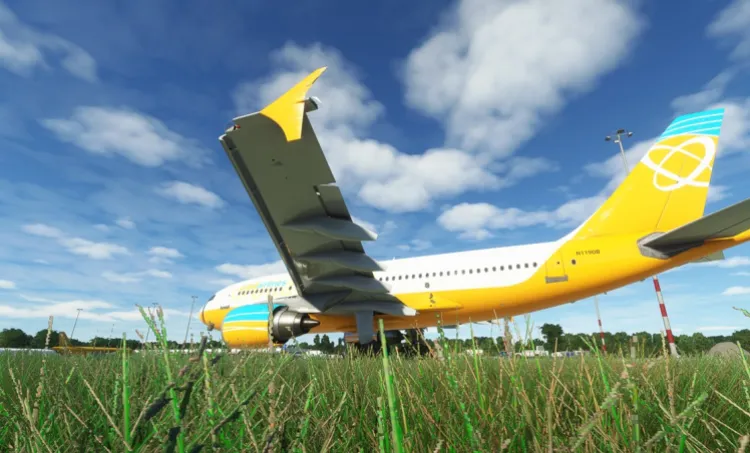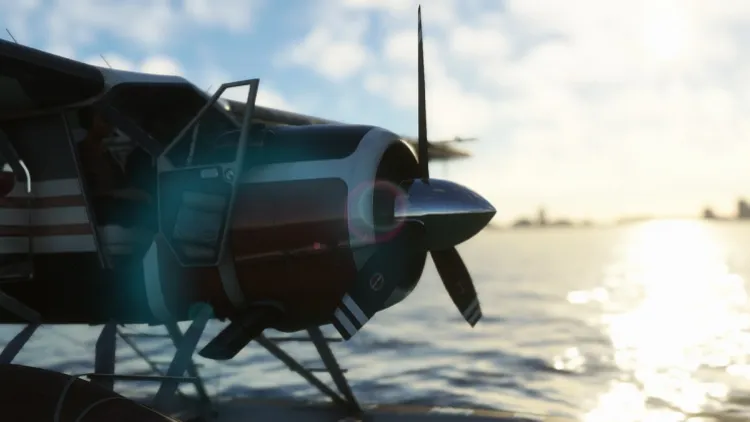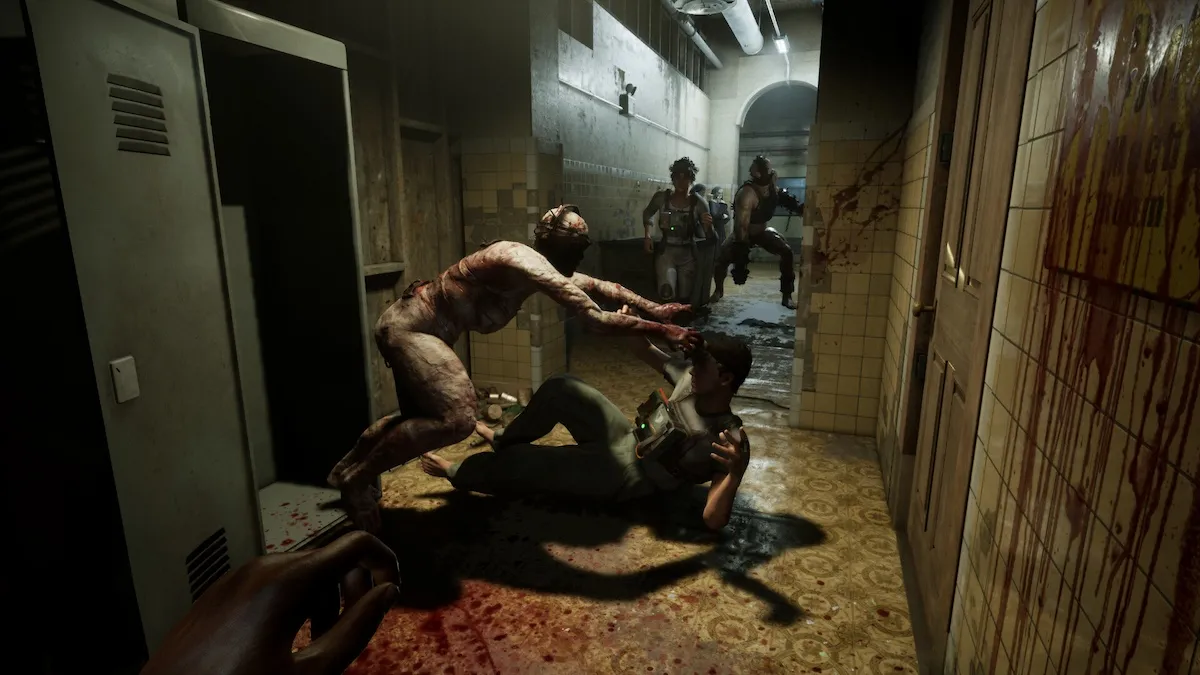I find it wild to believe that I’m practically half as old as the Microsoft Flight Simulator franchise. This series has been a staple in my life for about the last two decades. I’ve watched it grow from days of the crude, mid-2000s mod-heavy mishmash that was a typical FSX setup, to the meticulous visual sonata we have today with the 2020 release of the new-gen Microsoft Flight Simulator. I’ve spent countless hours flying its blue skies, but is the Microsoft Flight Simulator – 40th Anniversary Edition worth it?
Microsoft and Asobo have put together a hefty update to celebrate the series’ history, (re)introducing a number of historical aircraft; many of which have been in past iterations of the sim. Likewise, the update also includes some of the various Missions from the sim’s predecessors. Overall, it’s a fairly elaborate package, especially considering all of its contents are completely free. And, really, that’s what makes this update significant, since it marks a trend in the saga of the very interesting way that Microsoft Flight Simulator has been and will be supported in the years to come.
Wings of time
Nearly half of the aircraft included in the 40th Anniversary Edition have been in past sims within the franchise. Of course, their newest renditions are leaps and bounds more advanced than anything we’ve seen before.
Most of these new models have actually been created by smaller studios that specialize in such add-on aircraft development. For example, iniBuilds handled the illustrious new Airbus A310, and Aeroplane Heaven is responsible for the beautiful workhorse that is the Douglas DC-3.
Regardless of their source, however, each of the newly added aircraft have quite a bit of detail packed into them. I particularly marveled at all the intricate texture work both inside and out; particularly with the returning aircraft, it’s simply jaw-dropping to see these birds rendered in such rich detail.
That said, the actual overall flying experience, and by extension the comprehensive practicality of this update, ends up coming off as interesting, to say the least.
Historical value
Easily my most favorite out of the bunch is a toss-up between the DC-3 and the DeHavilland DHC-2 Beaver. Very different aircraft from each other, but both are great piston engine planes that are relatively easy to become acquainted with.
What certainly helps is the fact that they each have a retrofitted cockpit option that includes modern avionics, allowing for the use of both autopilot and GPS functionality. Some other historical add-on aircraft, such as the Staggerwing for example (not included in this update), completely lack such commodities even as an option. So, it’s nice to have such functionality present.
I especially liked the attention to detail with the Beaver; its huge, antique radial piston engine shakes the cockpit itself along with the gauges. The effect can be disabled, but it’s the little things like this which add a sprinkle of pizzazz making the package special.
The DC-3 — overall a great handling plane — only really disappointed me in the sound and effects department. I was surprised at how quiet it sounds inside the cockpit; the external audio is great, however. This is a big, lumbering plane with exceptionally loud, rattling engines — a source of much discomfort back in the day when it was used in passenger services. However, this perceived fault is still a defining characteristic of such aircraft from the post-war era. So, making it as silent as a modern turboprop, while technically nicer, takes away from its charm.
Not to mention the same cockpit-rattle effect that’s in the Beaver should also be present, but isn’t. The PMDG-made Douglas DC-6 add-on, which is the real-world successor to the DC-3, is a more comprehensive product overall. It really captures the headache and charm of flying such a vintage prop. In lieu of these quirks, it must be mentioned that Aeroplane Heaven has already announced it will be providing continuous updates to its DC-3 package for a while. And unlike the PMDG DC-6, the DC-3 is completely free. So, these points here aren’t really “complaints” as much as they are simple observations that may very well become outdated within the next few weeks and months.
Old but gold?
Having spoken so highly of these two fine machines, what about the rest of the update’s bounty? While I used these the Beaver and DC-3 the most out of all the new aircraft, I certainly did try a few others, too.
The Curtis Jenny, a former warplane, is interesting. Its wood and cloth frame is the definition of a simple flying machine — it was birthed just after flying became a “real thing,” after all. That said, I don’t see how useful it is other than just simple short hops when you just want to fly low and slow. It has no avionics, no brakes; it’s essentially a pretty motor with wings.
On the flipside of the spectrum, you have the massive Spruce Goose. In the real world, this behemoth didn’t fly for more than a few seconds — and only once. Thus, you can now finally use it as it was intended here in Microsoft Flight Simulator – 40th Anniversary Edition.
That said, it’s dubbed the “The Flying Boat” for a reason — it pretty much handles as such. Although still definitely useable despite its lumbering feeling of response, considering the fact it has no landing gear, it can only be launched from and landed into bodies of water. Therefore, it’s not overly practical.
The water physics of Microsoft Flight Simulator are still rather rudimentary, which makes any amphibious plane only somewhat useful. Although that’s quite strange considering we’re seeing more of them in the Marketplace. Hopefully it’s an area Asobo will improve in the future.
For a more versatile amphibious experience, the classic Grumman Goose, also included in this update, is technically the better option. I like it, though I noticed some annoying squeaking sound effects.
The tale of the “Whirly Birds”
The long-awaited arrival of full helicopter support is one of the biggest facets of the 40th Anniversary Update. These have long been a staple in the Microsoft Flight Simulator series, so their omission when the sim initially launched was odd. That said, there have been helicopters released as both paid and free add-ons well before this update, but their true flight dynamics have never been fully realized until now.
The two included models in this update, the Bell 407 and Guimbal Cabri G2, are a bit of a toss-up. The latter is certainly my favorite, as it’s not only smaller, but also noticeably easier to handle.
I was able to conduct a great scenic tour of flying from the edge of Connecticut into Rhode Island; a route I’ve been doing consistently in real life in recent times. However, this was done in a car. Thus, it was great to use the sim to the scenery from a different perspective. The Cabri also proved to be useful for exploring the metro area of virtual Chicago by landing and taking off from the beautifully restored Meigs Field—a returning classic airport which was the starting point in some of the sim’s past iterations (which in real life has been demolished).
The Bell 407, at least in its current state, feels like more of a wild stallion. It’s sometimes a bit too twitchy and yet also sometimes unresponsive. At least it is paired with visual and audio excellence. There’s already a community-made improvement mod out there to help alleviate its behavioral issues. When I found it, I realized these problems weren’t even just in my head.
I’m surprised that while there are tutorial flights for the newly-added gliders, there’s not even a single one that covers the basics of handling helicopters. They fly very differently than traditional airplanes, so it’s not a straightforward experience. There are community-made YouTube tutorials, which are great, but having a proper introductory and training course in the sim that you can try out for yourself is a critically missed opportunity.
Moving on from the little choppers, there’s the arguably biggest deal of this update—the coveted, “study-level airliner”, the Airbus A310.
Airbus altercations
Developed by iniBuilds, the Airbus A310 was heralded as a gem since this update was initially announced. Described as a true “study-level” aircraft, the fact that it was being added into Microsoft Flight Simulator for free was made out to be quite the deal for the sim’s fans. And, that’s true. Similarly intricate aircraft like releases of the PMDG 737-700/800 and Fenix Airbus A320 do add water to this argument, as they all cost more than a copy of Microsoft Flight Simulator itself.
All things considered, iniBuilds has done a great job with the A310. It looks good both inside and out, and its sound package is nice, too. The flight dynamics also appear to feel really smooth and realistic.
From a familiarity standpoint, to me, it functions similarly to the Airbus A320. The latter has existed as the premier default airliner in the sim since launch. That said, now the A310 is truly the most advanced default airliner in the entire Microsoft Flight Simulator roster, as it has more advanced functionality than even the Boeing 787, which can only be obtained by purchasing the expensive “Premium Deluxe” version of the sim.
Despite all these accolades, however, it seems to need a little more optimization tweaking.
I struggled to fly the A310, not because the plane itself is bad, but because its intricate systems seems to be quite taxing on my machine. Other users have voiced similar findings, as it seems to really bog down framerates across different hardware configurations. In my own experience, I lost over 10 fps than the usual, with the sim chugging at 15-20 frames per second on average. I took the aircraft into Chicago O’Hare, and experienced a slideshow performance of a mere 5 fps as I landed and taxied in.
This was easily the most painful experience I’ve had with Microsoft Flight Simulator since launch, a fact that stings even more considering the very recent release of Sim Update 10 made a dramatic improvement to the sim’s performance across the board.
Thankfully, iniBuilds is still improving the A310, and the team is investigating the reported issues.
Piston practicality
As I mentioned at the onset of this piece, the overall practicality of this 40th Anniversary Edition for Microsoft Flight Simulator is interesting to consider. On one hand, Asobo and its partners have done a great job at building meticulous virtual renditions of these beautiful aircraft, and it’s certainly great to fly some of them again.
But, considering they’re almost all historical, and/or of a different aircraft type, that causes the use cases for them all to fall all over the place.
Some folks will toy with the old birds for a bit and then perhaps get bored, craving the performance of the more advanced avionics of modern aircraft. The helicopters are great, but they’re harder to fly than a traditional plane. That said, at least the gorgeous scenery of Microsoft Flight Simulator now warrants getting close and flying low, which is a situation that ‘copters are often far better suited for than an airplane.
I didn’t even touch on the gliders because they literally are only useful in areas with high elevation and strong wind; not to mention they’re not meant for practical transport. Rather, they’re meant to fly for fun, but that’s not everyone’s cup of tea anyway.
Also, the return of the classic Mission Mode, while great, can be largely ignored because there’s no real “reward” for completing any of them. While they do give you a set of practical objectives to accomplish, there’s still no real sense of progression within the sim.
True, “aimless fun” has always been the real intent behind consumer flight simulators, but with Microsoft Flight Simulator being more robust and complex than ever, perhaps its high time the series’ underlying mechanics to also expand.
This update is great — free content (and a lot of it), always is. But, it did leave me with this feeling of yearning for more. Time will tell just how far the series expands within its next five, 10, and perhaps even 40 more years.
Microsoft and Asobo have already set a pretty steady trend of releasing comprehensive updates to improve both the core sim functionality and provide new content. So, the likelihood of another slew of new enhancements being dropped into the laps of players is high. Yet, here’s hoping it’s not just a bucket of toys, but also, for lack of a better term, they also come with a real set of tools to make those toys even more useful.

